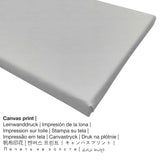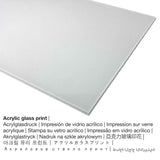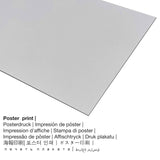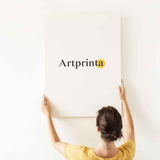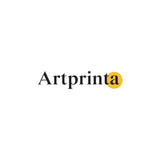Article summary
A Banquet is an artpiece made by the baroque artist Dirck Hals. The version of the painting was made with the size: 16 x 26 in (40,6 x 66 cm). Oil on wood was used by the European painter as the technique for the masterpiece. It is included in the The Metropolitan Museum of Art's digital art collection, which is one of the world's largest and finest art museums, which includes more than two million works of art spanning five thousand years of world culture, from prehistory to the present and from every part of the globe.. The public domain work of art is provided with courtesy of The Metropolitan Museum of Art, New York, Purchase, 1871. In addition to that, the artpiece has the following creditline: Purchase, 1871. On top of that, alignment is landscape and has a ratio of 3 : 2, which implies that the length is 50% longer than the width. Dirck Hals was a male painter, whose style was primarily Baroque. The Baroque painter lived for a total of 65 years - born in the year 1591 in Haarlem, North Holland, Netherlands and died in the year 1656 in Haarlem, North Holland, Netherlands.
Choose a art print material variant
We offer a range of various sizes and materials for every product. We allow yout to choose among the following variants:
- Aluminium print (aluminium dibond): Aluminium Dibond prints are metal prints with a true depth effect. Colors are bright and vivid, fine details are very clear, and you can truly feel the matte appearance of the fine art print.
- The canvas print: A UV printed canvas material mounted on a wooden frame. Canvas Prints have the advantage of being relatively low in weight, which implies that it is easy to hang your Canvas print without the support of additional wall-mounts. A canvas print is suitable for any kind of wall.
- The acrylic glass print: The acrylic glass print, which is often referred to as a plexiglass print, will turn the original artwork into décor and makes a viable alternative option to canvas and aluminidum dibond art prints. With an acrylic glass fine art print contrasts as well as smaller details will be exposed with the help of the delicate gradation. The plexiglass with real glass coating protects your custom art print against light and external influences for up to six decades.
- Printed poster (canvas material): Our poster print is a UV printed sheet of canvas with a fine finish on the surface. The print poster is excellently suited for placing your fine art print in a personal frame. Please bear in mind, that depending on the absolute size of the canvas poster print we add a white margin of around 2-6 cm round about the print motif, which facilitates the framing with a custom frame.
Important note: We try everything in order to depict the art products as exact as we can and to exhibit them visually in our shop. Please keep in mind that the tone of the printed materials, as well as the printing might diverge to a certain extent from the presentation on your monitor. Depending on your screen settings and the nature of the surface, colors can unfortunately not be printed as realisitcally as the digital version. Because our art reproductions are printed and processed manually, there might as well be slight variations in the exact position and the size of the motif.
Article table
| Product categorization: | art reproduction |
| Reproduction method: | reproduction in digital format |
| Production process: | UV direct print |
| Production: | produced in Germany |
| Stock type: | on demand production |
| Intended usage: | gallery wall, wall decoration |
| Orientation of the image: | landscape alignment |
| Image ratio: | length : width - 3 : 2 |
| Aspect ratio meaning: | the length is 50% longer than the width |
| Available options: | poster print (canvas paper), metal print (aluminium dibond), acrylic glass print (with real glass coating), canvas print |
| Canvas print (canvas on stretcher frame) size variants: | 30x20cm - 12x8", 60x40cm - 24x16", 90x60cm - 35x24", 120x80cm - 47x31", 150x100cm - 59x39" |
| Acrylic glass print (with real glass coating) sizes: | 30x20cm - 12x8", 60x40cm - 24x16", 90x60cm - 35x24", 120x80cm - 47x31", 150x100cm - 59x39" |
| Poster print (canvas paper) size variants: | 60x40cm - 24x16", 90x60cm - 35x24", 120x80cm - 47x31" |
| Aluminium print variants: | 30x20cm - 12x8", 60x40cm - 24x16", 90x60cm - 35x24", 120x80cm - 47x31" |
| Frame: | without frame |
Piece of art specs
| Title of the artpiece: | "A Banquet" |
| Categorization: | painting |
| Art categorization: | classic art |
| Temporal classification: | 17th century |
| Created in the year: | 1628 |
| Approximate age of artwork: | around 390 years old |
| Painted on: | oil on wood |
| Dimensions of the original work of art: | 16 x 26 in (40,6 x 66 cm) |
| Museum: | The Metropolitan Museum of Art |
| Location of museum: | New York City, New York, United States of America |
| Website: | The Metropolitan Museum of Art |
| License of artwork: | public domain |
| Courtesy of: | The Metropolitan Museum of Art, New York, Purchase, 1871 |
| Artwork creditline: | Purchase, 1871 |
Artist summary table
| Artist name: | Dirck Hals |
| Other names: | D. Hals, D. Halls, Derick Hals, Derick. Hals., D Hals, drick hals, Hals Dirk, Dirck Hals, Direk Hals, Hals Dirck, Dirk Hals, Dirk Hales, Hals Thierry, Hals, Dirick Hals, Dirck Halls, Dirk Halls |
| Gender of the artist: | male |
| Artist nationality: | Dutch |
| Jobs of the artist: | painter |
| Home country: | the Netherlands |
| Classification: | old master |
| Art styles: | Baroque |
| Lifespan: | 65 years |
| Born: | 1591 |
| Birthplace: | Haarlem, North Holland, Netherlands |
| Died in the year: | 1656 |
| Place of death: | Haarlem, North Holland, Netherlands |
© Copyright - intellectual property of - Artprinta.com
Original artwork specifications as provided by The Metropolitan Museum of Art (© Copyright - The Metropolitan Museum of Art - www.metmuseum.org)
Frans Hals's younger brother Dirck probably studied with him and perhaps with the Rotterdam genre painter Willem Buytewech (1591/92–1624), who worked in Haarlem about 1612–17. Like Buytewech, Dirck was a specialist in depicting small figures, often with close attention to fashionable costume details. His colorful and painterly technique owed a great deal to his more gifted older brother, whose style and subjects are studied in the Museum's current exhibition, "Frans Hals in the Metropolitan Museum" (July 26–October 10, 2011). The present painting is generally abraded by cleaning in the past; wood grain is visible throughout the thinned paint layers, especially in the lighter passages.


